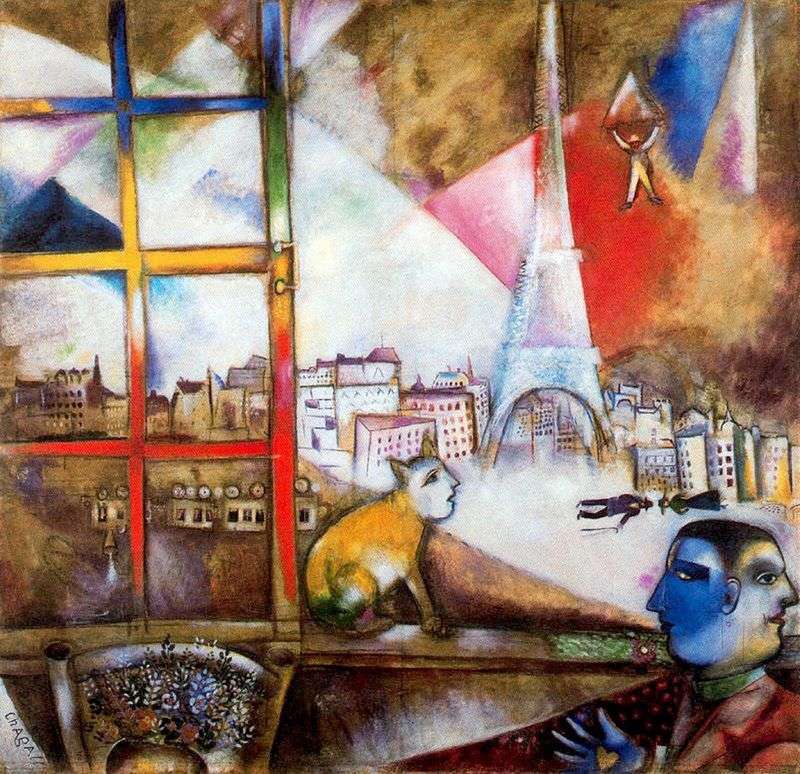
The painting was painted at the end of the artist’s first period of stay in France. After a few years, he nevertheless turned his attention to the French capital.
The view from the window shown here will later become typical of Chagall. He symbolized a view of the external reality from within, the unity of the home and the world.
In the 1910s, the Eiffel Tower impressed Chagall. In his eyes, it was not so much the personification of technical civilization as the new Tower of Babel, this time capable of reaching mystical heights. In “Paris from the window,” her aspiration into the sky emphasizes and once again confirms the window frame, which looks like a ladder. As always, the images created by Chagall combine the real and the surreal, and in their illogicality has its own internal logic.
The main theme of the picture is the duality and unity of the world: flowering plants, born of earth, and a multifaceted, bottomless sky, men and women, man and animal, internal and external vision embodied in the image of two-faced men like Janus.
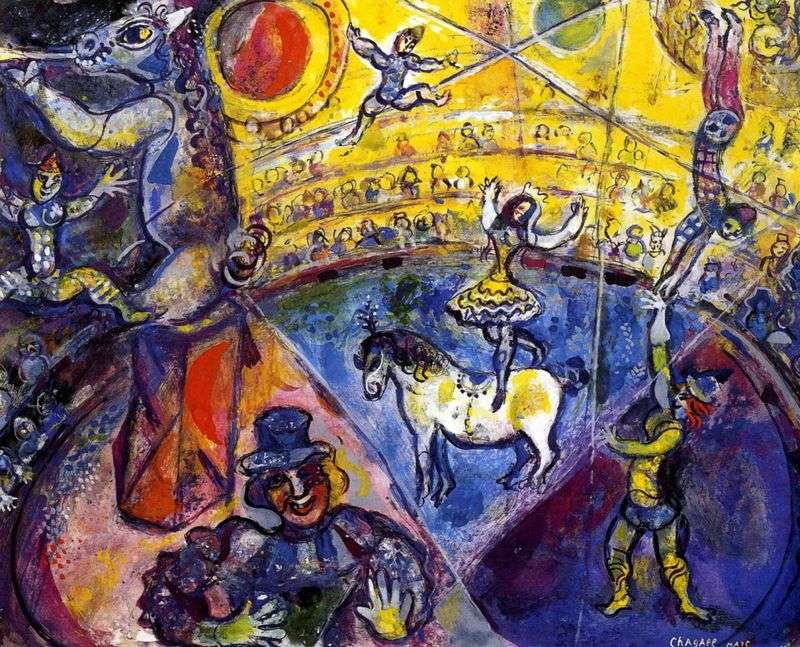 Circus horse by Marc Chagall
Circus horse by Marc Chagall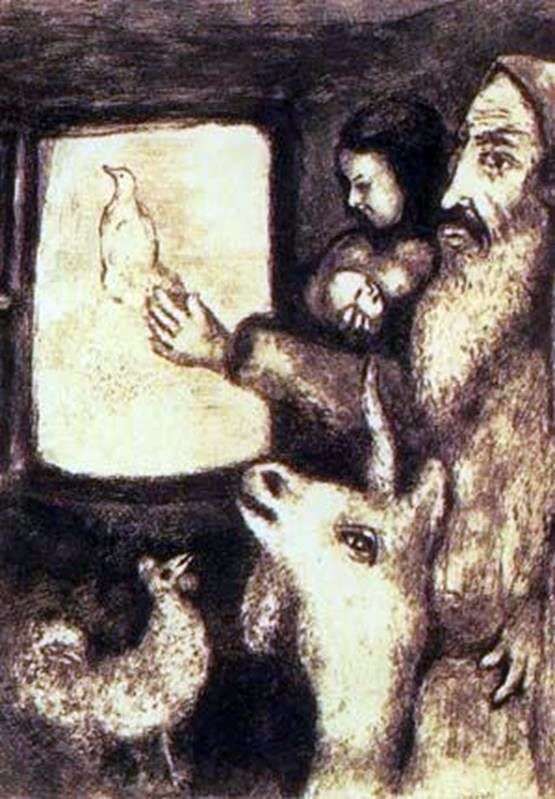 Book illustrations by Marc Chagall
Book illustrations by Marc Chagall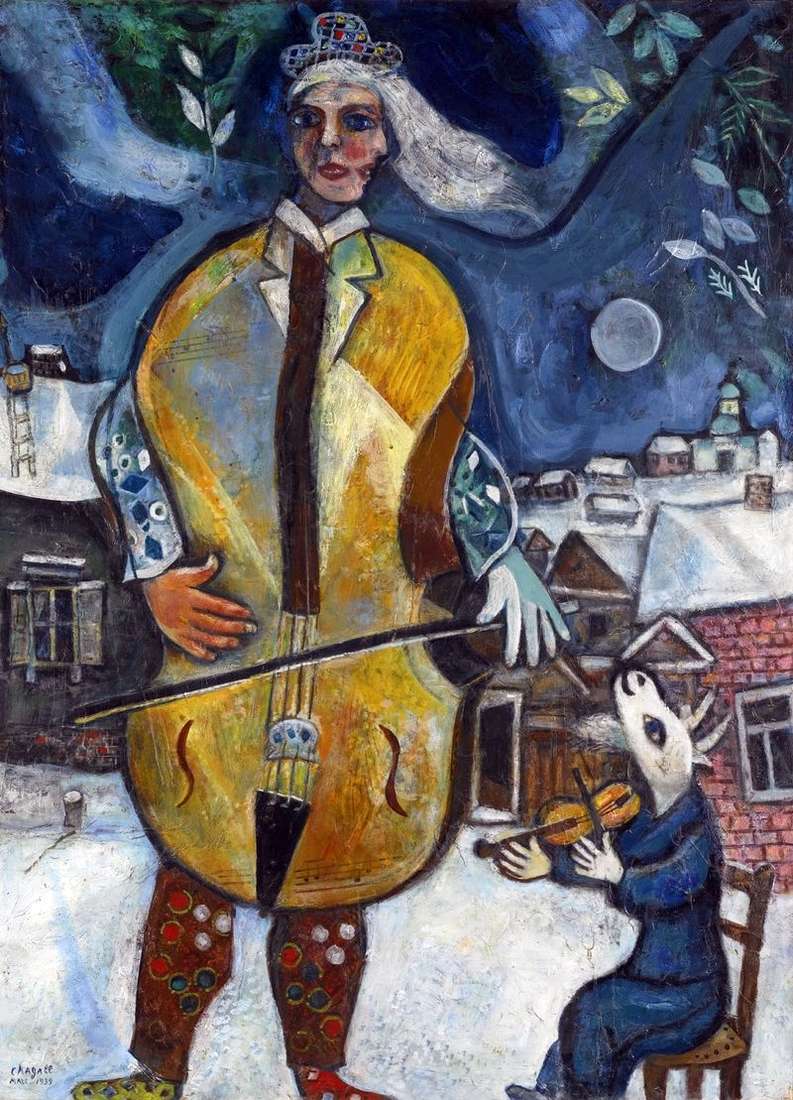 Cellist by Marc Chagall
Cellist by Marc Chagall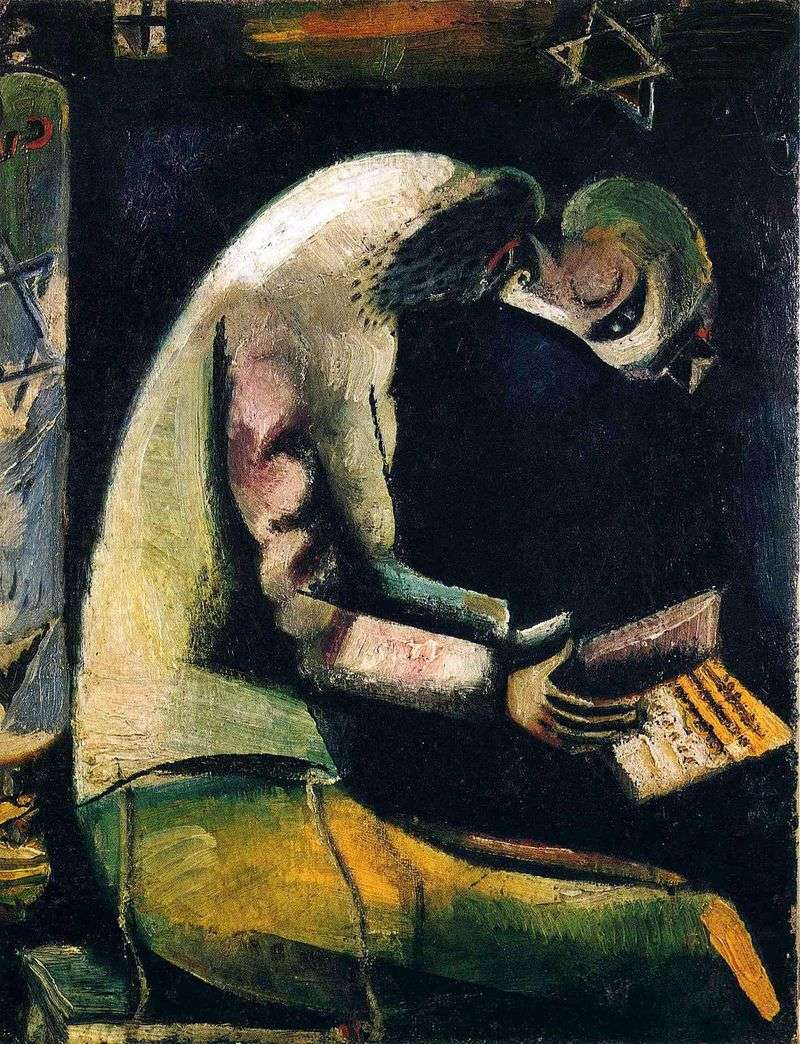 The Jew for Prayer by Marc Chagall
The Jew for Prayer by Marc Chagall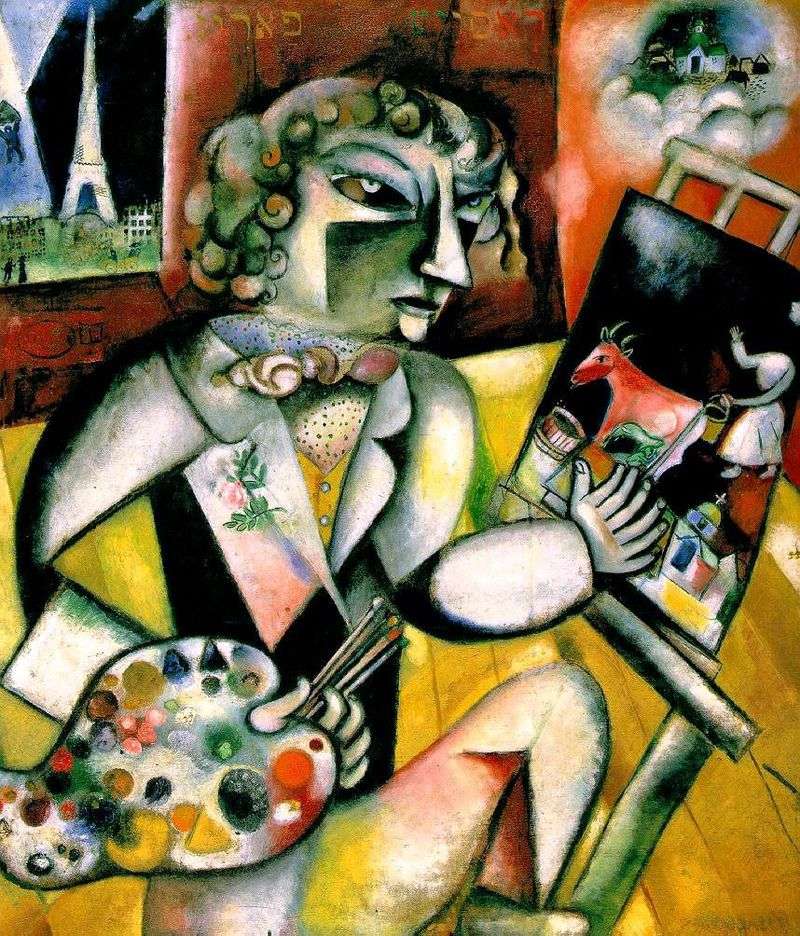 Self-portrait with seven fingers by Marc Chagall
Self-portrait with seven fingers by Marc Chagall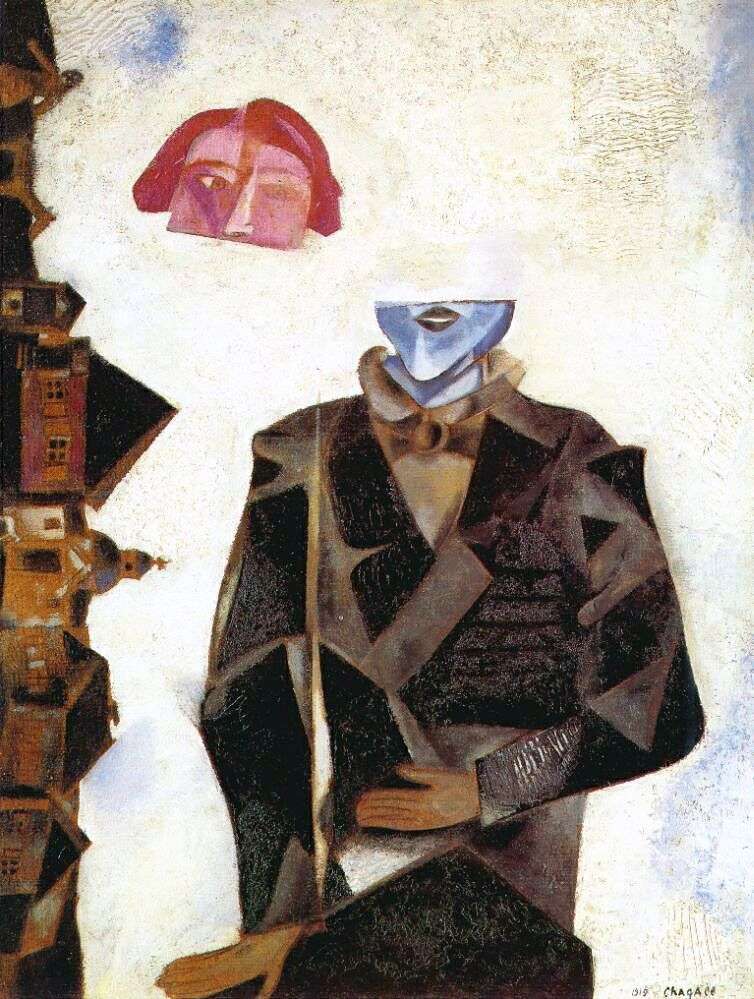 Anywhere just to get out of this world by Marc Chagall
Anywhere just to get out of this world by Marc Chagall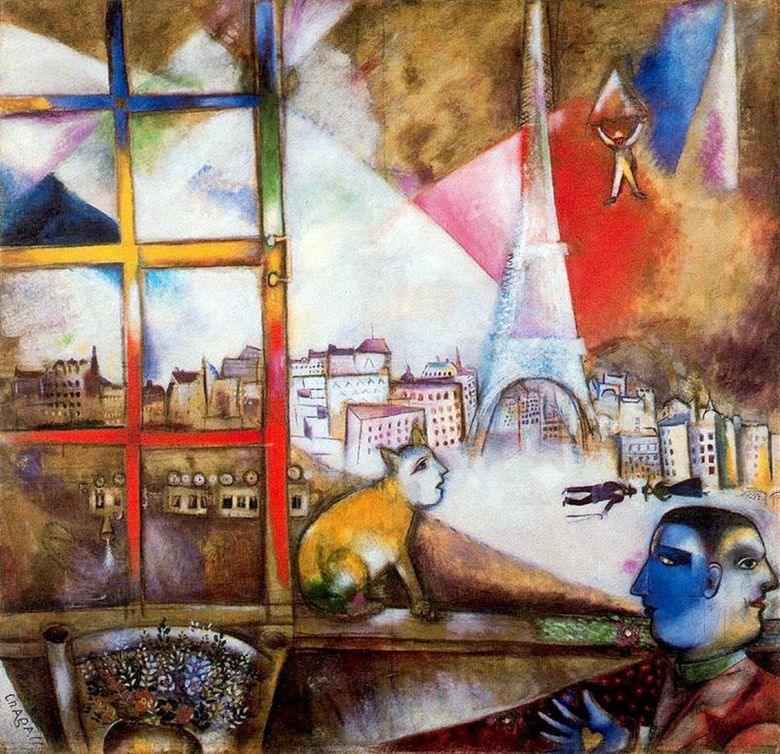 Paris depuis la fenêtre – Marc Chagall
Paris depuis la fenêtre – Marc Chagall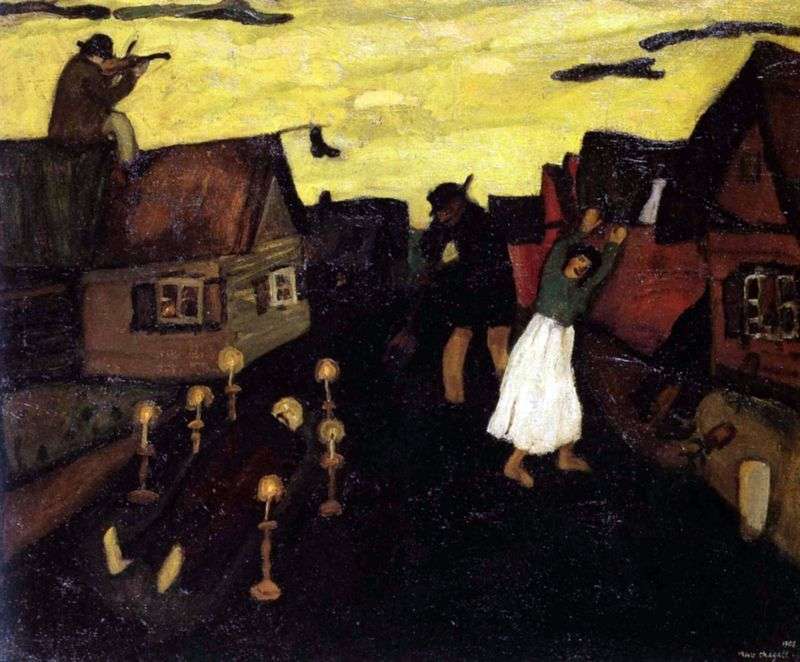 The deceased (Death) by Marc Chagall
The deceased (Death) by Marc Chagall